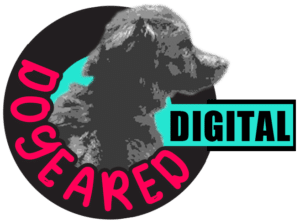You hear the term “relationship building” thrown around a lot in marketing circles these days. But what does it actually mean in a tactical sense? It’s not like you’re going to take all your Instagram followers out to dinner or invite your blog readers over for wine and gossip.
The truth is, when you reach out to someone in a professional context, they inherently understand that your ultimate goal is to make a sale. Pretending otherwise would be disingenuous. However, that doesn’t mean relationship building is a fruitless endeavor. Far from it.
At its core, effective relationship building is about showing people that you:
- Are genuinely interested in them
- Care about what matters to them
- Are willing to take the time to truly understand them
- Have both the expertise and motivation to help them succeed
Let’s unpack what this looks like in practice by examining relationship building from two key perspectives: 1:1 vs. 1:many, and building relationships as a brand vs. as an individual.
The two perspectives of relationship building
When it comes to building relationships through content marketing, there are two key dimensions to consider:
- Are you focusing on building deep relationships with a few key individuals (1:1) or establishing a connection with a broader audience (1:many)?
- Are you building these relationships as a brand or as an individual contributor?
The strategies and tactics you employ will differ depending on where you fall on these spectrums. Let’s dive into each approach.

1:1 relationship building
Not all prospects are created equal, and thus they shouldn’t be treated that way. It’s okay to go above and beyond for high-value prospects in ways you wouldn’t for everyone.
While hosting small, in-person events is typically most effective for deepening relationships, these can be costly, time-consuming, and geographically limiting. The good news? You can recreate much of that same magic digitally:
- Send a prospect a gift card to a local cafe so you can enjoy coffee “together” over Zoom
- Mail a wine tasting kit to a prospect’s office so you can bond over a virtual tasting
- Give a prospect access to an exclusive online course or workshop at no cost
The key in the relationship building phase is to make these 1:1 interactions about them, not you. Focus on solving their problems and showcasing your expertise without devolving into a sales pitch.
For example, next time you have a high-value prospect inquiring about your product or service, forego simply jumping into a demo on your first call, as it can come off as aggressively sales-y. Instead, you can offer an audit and provide recommendations – no strings attached. Or, you can host a virtual workshop exclusively for your top prospects that demonstrates your expertise in your field without pushing a product.
By generously sharing your knowledge and resources, you demonstrate that you’re invested in their success – not just in closing a deal. That’s the foundation of a strong, trusting relationship.
1:Many relationship building
While going deep with every single prospect isn’t scalable, that doesn’t mean you can’t build relationships with a broader audience. However, 1:many relationship building requires more than just commenting on a certain number of social media posts per day.
Instead, 1:many relationship building is about demonstrating that you truly empathize with your audience’s unique challenges, aspirations, and needs. You can foster these connections through a carefully crafted content strategy:
- Research your audience: Dive deep into understanding your audience’s pain points, goals, and content preferences. Conduct surveys, interviews, and social listening to gather insights straight from the source.
- Plan your content themes: Based on your research, identify 3-5 core themes that will resonate with your audience and align with your brand expertise. These themes will serve as the foundation for your content calendar.
- Create valuable content: Develop a mix of content formats (blog posts, videos, podcasts, etc.) that comprehensively address your core themes. Focus on providing actionable advice, fresh perspectives, and real examples that your audience can learn from.
- Distribute strategically: Share your content across the channels where your audience is most active. Optimize your content for each platform and include clear calls-to-action to encourage engagement.
- Engage and listen: Monitor comments and messages to understand how your audience is responding to your content. Respond to their questions, ask for their feedback, and incorporate their insights into future content planning.
Make sure your content indicates that the lines of communication are open, and when people reach out, respond promptly and thoughtfully. Participate in online conversations that are pertinent to your brand and audience, genuinely engaging in discussions that matter to your community. Take note of the people who consistently interact with your content – sharing, commenting, and sparking conversations. These are your budding brand advocates. Nurture those relationships by returning the favor – share their content, respond to their comments, and look for opportunities to spotlight their expertise.
Take Lamar Advertising’s campaign for National Pet Day. In partnership with Shoutable, a customizable billboard tech company, Lamar invited pet owners to submit their furry friend’s name and photo for free display on digital billboards nationwide. By providing a platform for pet lovers to publicly celebrate their bond with their four-legged besties, Lamar not only tapped into a universally beloved topic – they created a sense of community and shared joy around their brand. Plus, by showcasing the ease and creativity of personalized messaging on their digital billboards, Lamar demonstrated their own capabilities in a way that felt authentic and engaging. And I would know, because of course Niles had his very own moment in the spotlight through this campaign!

Spotify’s regular email campaigns offering limited-edition records to top fans is a great example of 1:many relationship building done right. By segmenting their audience based on engagement levels and tailoring their outreach accordingly, Spotify shows they understand and appreciate the varying degrees of investment among their user base. For the broader audience, Spotify consistently curates personalized playlists and provides music discovery tools, demonstrating an ongoing commitment to delivering value based on individual preferences. For top fans, they go the extra mile by offering exclusive content, early access, and VIP experiences, rewarding and incentivizing higher levels of engagement. This tiered approach allows Spotify to effectively scale its efforts while still creating a sense of community and appreciation among all its users.

By following this process and taking inspiration from campaigns like those from Lamar and Spotify, you can create content that consistently delivers value to your audience and demonstrates your commitment to their success.
Building relationships as a brand
While it can be more challenging to convey that human element when you’re communicating as a brand, there are some unique advantages:
- Brands have the resources to create content at scale
- A strong brand identity fosters long-term trust and loyalty
- Brands can leverage data to personalize experiences across touchpoints
To build connections between your brand and the people you serve, focus on humanizing your brand at every opportunity:
Showcase the people behind your logo: Help your audience connect with the humans behind your brand through “meet the team” blog posts, employee spotlights on social media, or executive thought leadership articles.
Tell customer stories: Feature case studies and testimonials that showcase how your products or services have made a real impact on your customers’ lives. Let your customers be the heroes of these stories.
Get personal: Track behavior across touchpoints (think: website, email, social media, etc.) and use that data to come up with personalized content or experiences that uniquely appeal to different sectors of your audience.
Provide behind-the-scenes glimpses: Give your audience a peek behind the curtain with behind-the-scenes content. This could include office tour videos, “day in the life” employee features, or a look at your product development process.
Build a community: Foster a sense of community among your audience by creating spaces for them to connect with each other and with your brand. This could be an online forum, a branded hashtag, or even in-person events.
A prime example of a brand excelling at building relationships is Patagonia. The outdoor clothing company has built a fiercely loyal community by consistently creating content that aligns with their audience’s values, actively engaging in the causes they promote, and humanizing their brand at every touchpoint. From showcasing real customers’ adventures in their “Worn Wear” blog to highlighting employees’ environmental activism on social media, Patagonia infuses their brand with personality and purpose. As a result, their customers don’t just buy products – they buy into a movement.
Taking a page out of Patagonia’s book, the key to building relationships as a brand is to infuse your content and communications with personality, demonstrating the human values and motivations driving your business.
Building relationships as an individual
As an individual, you have a leg up when it comes to being relatable and building trust. To make the most of this advantage:
Feature audience contributions: Incorporate your audience’s expertise into your content through expert roundups, guest posts, or podcast interviews. This not only provides valuable perspectives for your audience but also helps contributors build their own brands.
Establish yourself as a resource: Share your unique insights and experiences through blog posts, social media, or by hosting webinars and workshops. Consistently providing valuable content will help you become a go-to resource in your niche.
Collaborate with other experts: Partner with other trusted voices in your industry to create co-branded content like webinars, ebooks, or courses. This allows you to tap into each other’s audiences and provide even more value.
Build an engaged community: Create a dedicated space for your audience to connect with you and each other, such as a Facebook group or Slack community. Regularly share exclusive content, facilitate discussions, and highlight members’ successes.
When creating content as an individual, featuring expert contributions through “ask an expert” articles is a powerful way to build relationships and establish yourself as a go-to resource. Reach out to influential figures in your industry or community and invite them to share their insights on a topic that resonates with your audience. For example, take a look at this Toronto Star article “Oscars 2024: We asked chefs and restaurant owners what they’ll be snacking on this Sunday night” or the blog post “8 Marketing Experts Share Their All-Time Favorite Lead Generation Ideas” published on Wordstream.
By showcasing the expertise of others, you not only provide valuable exposure for the featured individuals but also position yourself as a connector and curator of industry wisdom. This approach helps you build relationships with the experts you feature while attracting their followers to your own content. Plus, by including a diverse range of voices and perspectives, you create a richer, more engaging experience for your audience.
The key is to focus on lifting others up and providing value without always expecting something in return. By being generous with your knowledge and platform, you’ll build a reputation as a trusted, go-to resource in your space.
The importance of authenticity and consistency
Regardless of whether you’re building relationships as a brand or an individual, on a 1:1 or 1:many basis, there are two critical components to building lasting, meaningful connections: authenticity and consistency.
Authenticity means staying true to your values and personality in every interaction. It’s about being transparent, owning your mistakes, and always striving to do what’s best for your audience – even when it doesn’t directly benefit your bottom line.
Practically, this might look like:
- Openly sharing your process, including failures and lessons learned
- Acknowledging when you don’t have all the answers
- Standing up for causes that align with your brand values
- Using a consistent brand voice that reflects your unique personality
- Featuring real people (employees, customers, partners) in your content
Consistency, on the other hand, is about showing up regularly and delivering on your promises. It’s about being a reliable resource that your audience can count on for quality insight and support.
This might involve:
- Sticking to a regular publishing schedule for your blog or newsletter
- Promptly responding to audience questions and comments
- Following through on commitments you make to customers or partners
- Maintaining a consistent brand experience across all touchpoints
- Continuously improving your offerings based on audience feedback
Together, authenticity and consistency foster the kind of trust and familiarity that turns casual readers into loyal brand advocates.
Create bonds that last a lifetime
Building relationships through content marketing doesn’t happen overnight, and there’s no one-size-fits-all formula. It requires a genuine interest in your audience, a commitment to providing value, and a willingness to show up consistently over time.
By strategically combining 1:1 and 1:many tactics, and leveraging the unique strengths of both personal brands and business brands, you can make the most of each touchpoint, establishing trust, deepening connections, and ultimately driving business results.
But it all starts with a simple shift in mindset: from seeing your content as a megaphone for your message, to viewing it as an opportunity to listen, learn, and serve your audience.
Because at the end of the day, real relationships aren’t built through clever tactics or shiny tools. They’re built through genuine empathy, generosity, and a shared commitment to each other’s success.

